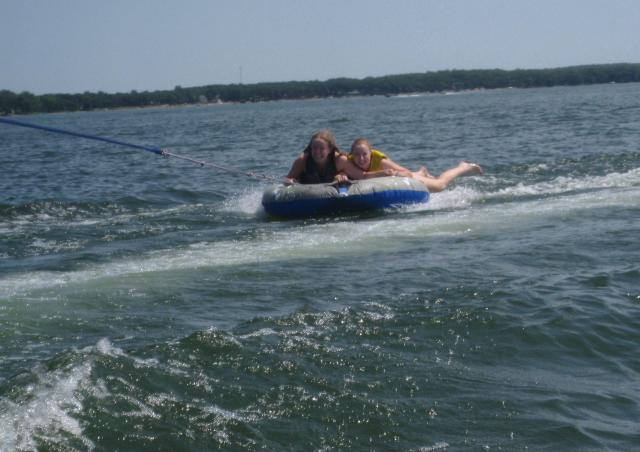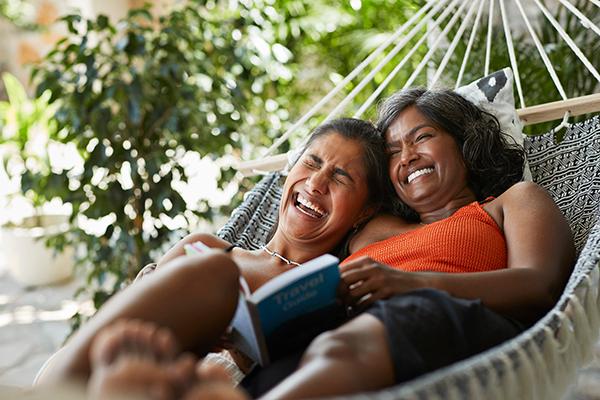Ahhh, summer. Season of beach days, roasting marshmallows, and generally being able to walk around without being so bundled up that you feel like a marshmallow. For many, summer is also a time for vacationing, whether as simple as taking a few days off to spend at the lake or going on a more extended trip somewhere.
When planning trips, exercise is something that tends to fall by the wayside. Or, perhaps more accurately, is purposely left out of the plans. Except for amateur and professional athletes—both of whom are dedicated to keeping their bodies well conditioned—the general American public considers “exercise” a taboo subject while on vacation.
I know from personal experience how my own family groans when we’re planning family trips and I talk about wanting to fit in morning runs. For them, my running is an inconvenience because we tend to have a slower start to our mornings as a result of waiting until I’ve run and showered before we can leave the campground to go sightseeing. But perhaps there’s also a sense of guilt involved from knowing that I’m out exercising while they’re sleeping in or lounging around the campsite, and it reminds them of the chores that are a part of regular, non-vacation life.
The example of my family is illustrative of what are probably the two main reasons most people avoid even thinking about exercise in conjunction with vacationing: the perceived inconvenience of taking time away from “the fun stuff” on vacation and the desire to avoid anything that resembles everyday chores. But contrary to popular opinion, exercise can be a fun part of any vacation, and it can be easy to incorporate even without having structured exercise time. In making the case for exercising on vacation, I’ll first discuss three categories I’ve come up with for vacation exercises, then present some of the reasons to incorporate one or more of those exercise types into your next vacation. Finally, I’ll close with a few tips for doing so.
Exercise Categories
1. Hobby Exercise 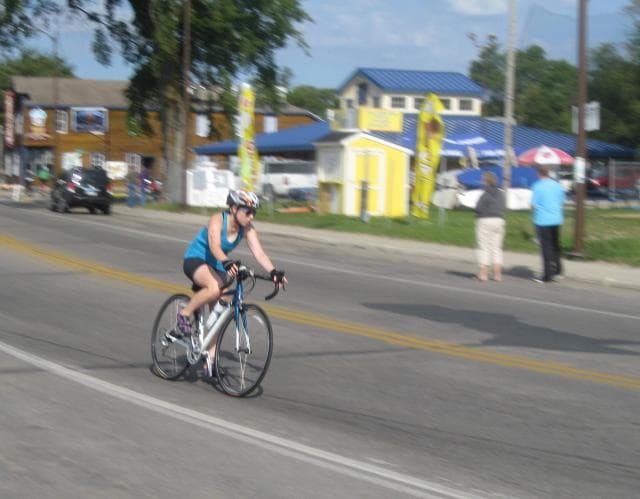
This category encompasses “lifestyle exercises” like running, hiking, biking, and swimming, each of which is enjoyed by many people around the country (and the world) as a lifelong hobby that is part of their general lifestyle (as opposed to specific sports like football, basketball, baseball, etc. that need teams and thus don’t lend themselves as well to individual athletic endeavors). Hobby exercises can be easy to do on vacations, business trips, and other travels because they don’t need a lot of special equipment (with the exception of biking, which of course needs at minimum a bike) and because their individual nature allows a single traveler to engage in this type of exercise without being dependent upon others to make up a team.
2. Structured Exercise
I created this category for exercises that are done less out of any particular enjoyment for the activities but rather out of a desire for the results. For example, exercises done to target specific areas of the body, like strengthening exercises for the abs, legs, and arms. I don’t know too many people who actually enjoy doing squats, push-ups, or multiple reps of arm curls, but they do them to have toned muscles and a strong body. This is a category of exercise that I tend to leave out of my vacation time because I don’t particularly enjoy some of these exercises and many require cumbersome equipment. (Who’s going to want to pack a 15-pound weight in their suitcase? Not me!) But there are still some easy ways to incorporate this type of exercise into your vacations, so those of you who don’t want to backslide on your progress from a week of vacation can still do some light leg and ab workouts to maintain your muscular fitness. More on that in my Tips section (last section of this post).
3. General Activity
Of the three categories I’ve created for vacation exercises, this category is the easiest one to incorporate into your travels with the least inconvenience and pain possible. That’s because this one doesn’t require setting aside specific “exercise time” or expending a lot of physical effort. Instead, this category covers everyday ways of being active, like walking short distances instead of driving, taking the stairs instead of an elevator, and so forth. In my Tips section, I’ll suggest some of the many ways you can look for opportunities to stay active in general while on vacation.
Reasons to Exercise on Vacation
It goes without saying that exercise is good for you, conferring many health benefits and helping with weight management. But there are other, more vacation-specific reasons to fit in exercise from one or more of the above categories while on vacation. Here are five:
1. Offsetting Food Splurges
 If you’re at all like me, vacation is a time to relax one’s usual discipline when it comes to eating. In my everyday life, I rarely go out to eat or order in lunch with my coworkers during the work week. When I do treat myself somewhere, it’s usually to frozen yogurt. (Confession: I’ve had a major weakness for Tutti Frutti ever since it opened in the spring of my senior year of college. I almost always fill up a medium dish when I go!) In college, I was even more disciplined in my eating habits than I am now. Unlike a typical college student, I almost made it through my four years without ever ordering anything delivered to my dorm or apartment, only finally ordering pizza a few weeks before I graduated, just for the experience of having done so once.
If you’re at all like me, vacation is a time to relax one’s usual discipline when it comes to eating. In my everyday life, I rarely go out to eat or order in lunch with my coworkers during the work week. When I do treat myself somewhere, it’s usually to frozen yogurt. (Confession: I’ve had a major weakness for Tutti Frutti ever since it opened in the spring of my senior year of college. I almost always fill up a medium dish when I go!) In college, I was even more disciplined in my eating habits than I am now. Unlike a typical college student, I almost made it through my four years without ever ordering anything delivered to my dorm or apartment, only finally ordering pizza a few weeks before I graduated, just for the experience of having done so once.
But my usual health-conscious mindset takes a bit of a vacation, too, when I travel. I of course try to make some sensible food choices each day, even at restaurants, but I eat out more often when I’m on vacation, and I let myself have desserts whenever I feel like it. On a week-long vacation I took in May, I ate at a pizza buffet twice during my trip! And I ate out several other times during that week besides those two meals. Needless to say, my food intake is far from ideal on vacations.
So if I were to completely refrain from any type of exercise and avoid being active while vacationing, a week of indulgence would haunt me for weeks after a trip, hampering my post-trip exercise, making my clothes uncomfortably tight, and leaving me feeling generally lethargic and unhappy. Maybe you’re not as lax with food as I am on vacation, but if you do splurge more than usual, then staying active on your trip can help ward off some of the undesirable consequences of vacation indulgence.
2. Opportunity
Another reason to incorporate exercise into vacations is the simple fact of having more free time on your hands than usual. It’s easy to get caught up in the busyness of daily life—a full workday, plus errands, meal prep, chores, paying bills, etc.—and not easily have the time or energy to add a workout on to an already long to-do list. For me, if I don’t get up early to get in a decent morning workout before work, I struggle to find time later in the day to exercise.
In contrast, vacations are a chance to get out of the rut of your regular routine, and you usually get to plan your day as you’d like during that time. Because of the increased free time and the break from your usual routine, vacation is the perfect opportunity to treat yourself to some exercise time (yes, “treat,” if it’s not part of your regular routine) and find an activity that you enjoy that’ll get you moving. If you usually exercise but are pressed for time on a regular day, then it can be fun to have more time to spend doing something you love. Or if you’re bored with the activities that typically make up your workout routine, then vacation is an opportunity to try out new activities and find something that makes it fun to work out.
Even better, if exercise isn’t usually part of your routine, then vacation is a great time to start a good habit that could carry over into your daily life even after your trip ends. You may be surprised to find that you enjoy an activity you’d never tried before or that you love the way you feel after exercising. And with these incentives, you’ll be more motivated to make time for exercise so it becomes part of your regular routine.
3. A Change of Scenery
Even exercises you enjoy can become boring when you don’t change up your routine or setting. Take running for example. I love to run, but when I’m stuck running the same few routes every time I head out the door, I eventually become bored with my surroundings and less excited to head out on a run in the first place. But when I go on vacation to a new place, I suddenly have many new route opt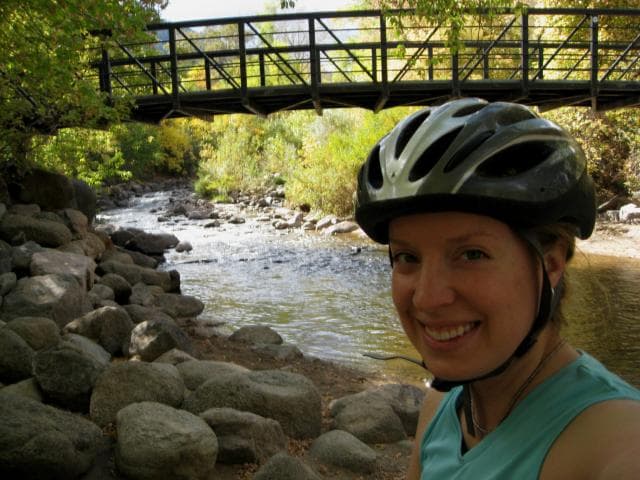 ions to explore and can’t wait to put on my shoes and see where my feet take me. And (with the exception of running at a higher elevation) the excitement of new scenery boosts my energy level and helps me run faster seemingly without as much effort as a slower run at home might take.
ions to explore and can’t wait to put on my shoes and see where my feet take me. And (with the exception of running at a higher elevation) the excitement of new scenery boosts my energy level and helps me run faster seemingly without as much effort as a slower run at home might take.
4. A New Experience
With exercises like running and biking, or even walking, there’s a bonus benefit to doing them in a new setting—the chance to blend in with the locals and experience in a new way the city or area where you’re vacationing.
Granted, this wouldn’t really work in “tourist trap” locations like resorts or in touristy sections of cities (locals may walk a lot in big cities, but they tend to avoid touristy shopping or amusement areas). You also have to be somewhat adept at making yourself look like you belong there. Walking around snapping pictures or running in a tee shirt with your hometown/home state sports team’s name emblazoned on the front is a dead giveaway. But walking to a deli to pick up lunch or heading out for a run in an Asics tank top and Under Armour shorts will let you fly under the radar, looking like a local. As long as you know (or at least look like you know) where you’re going. Getting lost and having to ask for directions will definitely blow your cover. (For more on planning running routes in unfamiliar locations, see my Tips section.)
For me, doing these types of activities in a new city has more than once been a highlight of my trip. I’ve biked on trails in Boulder, Colorado, where biking is a huge part of the local culture, earning Boulder a rank in a CNN Travel article as one of the 15 most bike-friendly cities in the world. I’ve run among the locals in San Diego, Denver, New York City, and elsewhere. I’ve taken the subway in New York as if I do it every day, and I’ve walked through the business district to grab lunch from a deli, which I ate while sitting on the edge of a fountain, blending in with the crowd of locals who were also on their lunch breaks. I’m not much of an actress, but I do enjoy playing the part of a local when I travel to a new city.
5. Making Memories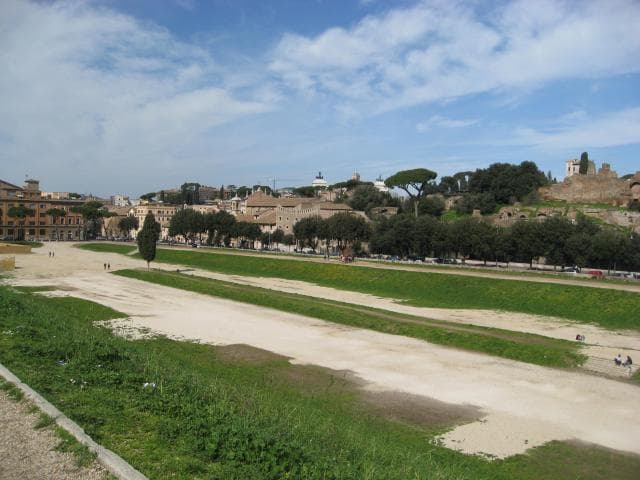
There are so many benefits to exercising on vacation that it’s hard for me to pick one reason as “the best” one. That would of course vary from person to person and depend upon priorities. As much as I value the previous four reasons to exercise, though, my favorite reason is probably the memories I make (and, sometimes, the good stories that come out of those experiences). Going running, biking, hiking, or walking on a trip can provide fun, free entertainment that will give you memories to laugh at or smile over for years to come.
I have many fond memories from different hikes I’ve gone on (in Colorado, in the Grand Canyon, and in Glacier National Park, to name a few) and from the day I rented a bike and spent hours biking in and around Boulder on various bike trails. But my best memories (and stories) have come from running in a new place, perhaps because—as the easiest type to do on vacation—it’s the type of exercise I do most often. Not all of my vacation runs have resulted in exciting stories, but there have been a few standouts. I could tell of how I felt connected to athletic history as I ran a lap around the remains of the Circus Maximus track in Rome, or of the snowy Colorado day when I fell on ice (alone, on the farthest point of my run, without a cell phone or ID) and had to get six staples to the back of my head.
But of all my memorable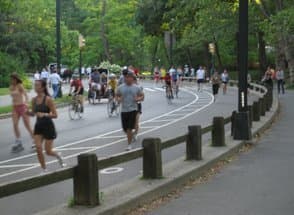 vacation runs, my favorite is the time I got lost in Central Park. I was in NYC on a business trip and was enjoying taking advantage of the exciting new scenery to run in the morning before heading to the office where I was working that week. Near the end of the week, I decided to head out a little earlier so that I could fit in four miles instead of the short three I’d been doing all the other mornings that week. Well, the extra half mile into the park before turning around brought me into new, unfamiliar territory, and long story short, a construction detour led me to inadvertently take a wrong turn when heading back.
vacation runs, my favorite is the time I got lost in Central Park. I was in NYC on a business trip and was enjoying taking advantage of the exciting new scenery to run in the morning before heading to the office where I was working that week. Near the end of the week, I decided to head out a little earlier so that I could fit in four miles instead of the short three I’d been doing all the other mornings that week. Well, the extra half mile into the park before turning around brought me into new, unfamiliar territory, and long story short, a construction detour led me to inadvertently take a wrong turn when heading back.
Without giving you the play-by-play of how it happened, what was going through my head as I realized I was lost, or how I navigated back to my hotel, I’ll just say that my intended 4-mile run turned into roughly an 8-mile run. I had the embarrassment of being 15 minutes late to work that morning and of feeling irresponsible for having had a personal activity affect my workday. But aside from being late and experiencing a few moments of fear, the memories from that run have enriched my running experience and will stick with me for the rest of my life.
Tips
Now that I’ve outlined a few different types of exercise that can be done on vacation and given you my top five reasons to incorporate one or more of these types into your next vacation, here are some tips to help you do so:
- Do what you love. Because it is vacation, you shouldn’t force yourself to do types of exercise that you hate. If you love to run, then let yourself run as much as you want on vacation. If you love hiking, take advantage of your vacation destination’s hiking options. On the flip side, if you’re usually diligent in cross training and are feeling burnt out by doubling up on combinations of cardio and strength training, ease off on your vacation time and do only the ones you most enjoy. If you really dislike structured exercise and don’t have any hobby exercises that you enjoy, then try to work in more general forms of being active, like walking, taking the stairs, and such.
- Try new things. Maybe you’re so busy during a normal work week that you can make time only for a few forms of exercise that you know are effective for you, but you wish you could try out some other types of exercise you’re interested in. Vacation is a great time to do so! Some high-end hotels and resorts offer fitness classes, so that can be a way to try out something new. Or maybe you only ever run and do Pilates but have toyed with the idea of adding some lap swimming to your routine. If you’re staying at a hotel with a pool, find out when the least busy times tend to be and then go work a little on basic swimming strokes or swim a few laps, as you’re able. Whatever you do, see it as a fun opportunity to do something you don’t usually get to do.
- Plan for it. Decide before you travel what types of exercise you’ll want to do on your trip, and plan to pack accordingly and make time for it in your vacation schedule. Bring attire appropriate for th
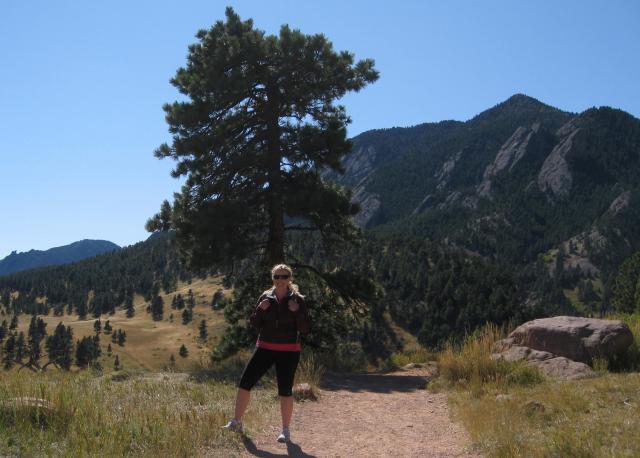 e activity/activities you plan to do. Look at city maps or use the MapMyRun site to plan suitable running routes so that you can run without getting lost. If you would like to include “structured” exercises (as described earlier) into your vacation, squats are a travel-friendly strengthening exercise for the lower body, and Pilates can be done for certain target areas (the abs, thighs, or butt) or for total-body strengthening. Squats don’t require much space or any special equipment, and Pilates moves can easily be done on your hotel bed or, if space allows, you can lay down a towel and do them on the floor of your hotel room. You can print out the directions for this series of squats or this short Pilates “Series of Five” core routine and carry the printouts with you as a guide. Or for a longer, total-body Pilates routine, refer to this list. If you aren’t already familiar with the Pilates moves on this second list, you can refer to this page and either learn them ahead of time or else print out the instructions for each and take them with you.
e activity/activities you plan to do. Look at city maps or use the MapMyRun site to plan suitable running routes so that you can run without getting lost. If you would like to include “structured” exercises (as described earlier) into your vacation, squats are a travel-friendly strengthening exercise for the lower body, and Pilates can be done for certain target areas (the abs, thighs, or butt) or for total-body strengthening. Squats don’t require much space or any special equipment, and Pilates moves can easily be done on your hotel bed or, if space allows, you can lay down a towel and do them on the floor of your hotel room. You can print out the directions for this series of squats or this short Pilates “Series of Five” core routine and carry the printouts with you as a guide. Or for a longer, total-body Pilates routine, refer to this list. If you aren’t already familiar with the Pilates moves on this second list, you can refer to this page and either learn them ahead of time or else print out the instructions for each and take them with you. - Walk whenever you can. In big cities like New York, people don’t think twice about doing a lot of walking to get where they need to go. For distances too far to walk, consider trying out such forms of public transportation as the subway system. In a smaller city like Fargo, we’re used to driving everywhere because the city is a lot more spread out and public transportation isn’t as effective here. But if your vacation takes you to a big city, take advantage of the opportunity to be more active by walking anywhere within a reasonable distance from your starting point (as long as the neighborhood is safe and you’re not alone at night). If you plan to visit a few points of interest that are located within a mile or so of each other, then walk from one to the other (if the layout of the streets allows) instead of driving or taking a bus.
- Tailor it to the location. If you’re visiting a city like Boulder where biking and hiking are popular, plan to look into your options ahead of time and take advantage of as much as you have time for. Rent a bike from a local bike shop, or choose a park with hiking trails and plan a hike.
- Choose the active over the sedentary. In addition to choosing walking over driving if possible, there are other easy ways to make your vacation more active without doing formal exercise. As mentioned in the “General Activity” exercise description, you can do simple things like taking the stairs instead of using the elevator (such as in hotels, airports, and shopping centers), or choosing the stairs over an escalator (often in shopping centers and airports). When using airports while traveling, walk briskly when heading between gates for connecting flights and either avoid the “people movers” or get in the walking lane on them and continue walking instead of standing still as it moves you. Take advantage of layovers by walking around as much as possible after finding your gate, rather than parking yourself at a coffee shop or restaurant next to your gate and sitting there for your entire layover. When sightseeing, include activities that will keep you moving, such as walking around a zoo or around downtown as you check out shops or historic sites.
Now that I’ve made the case for exercising on vacation—outlining different types of exercise, covering my top five reasons to incorporate it, and giving you some tips for doing so—I hope you’ll consider making exercise a part of your next vacation!
Photo Sources:
http://myupperwest.com/upper-west-side/central-park-fitness-events-weekend/

